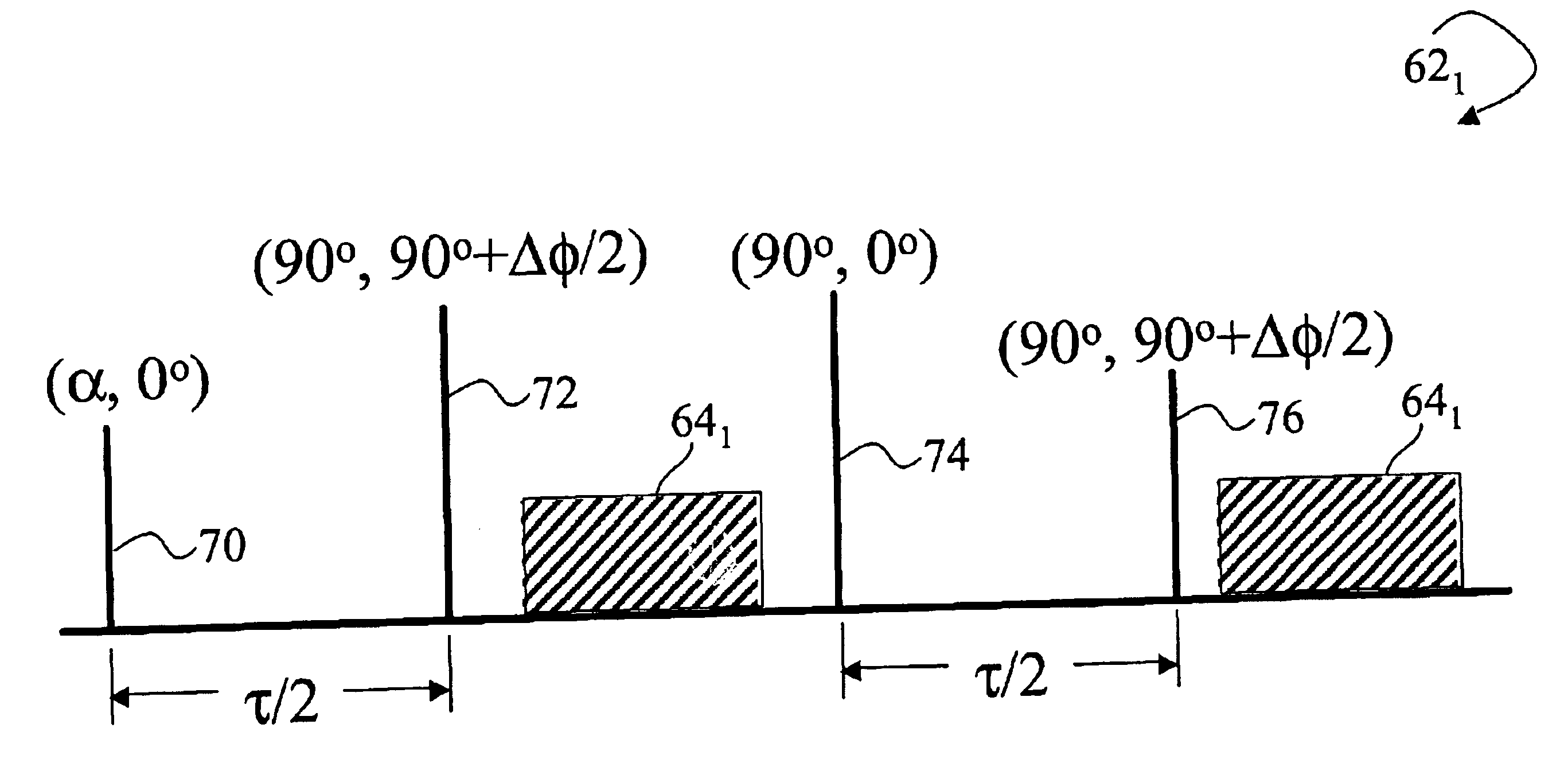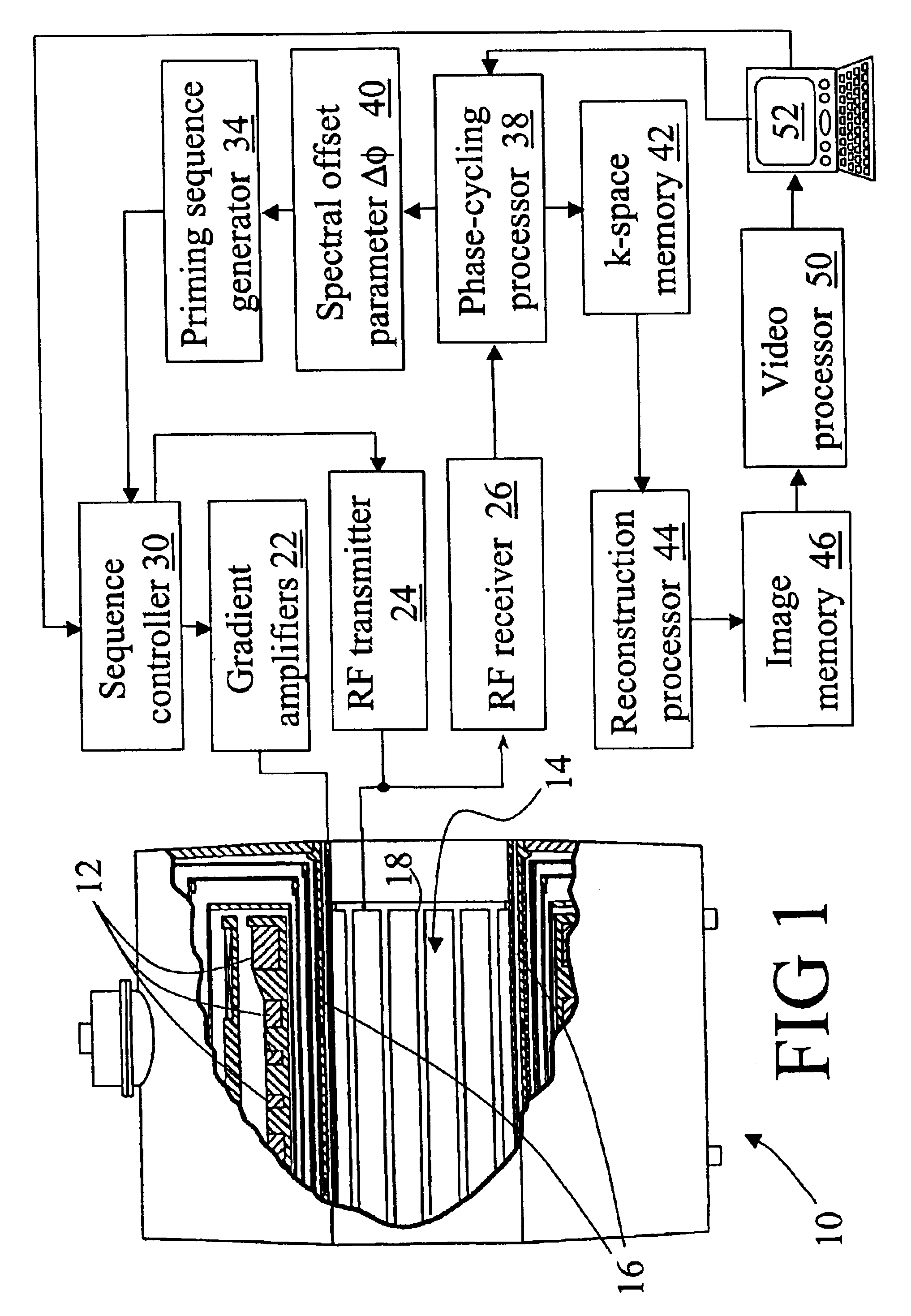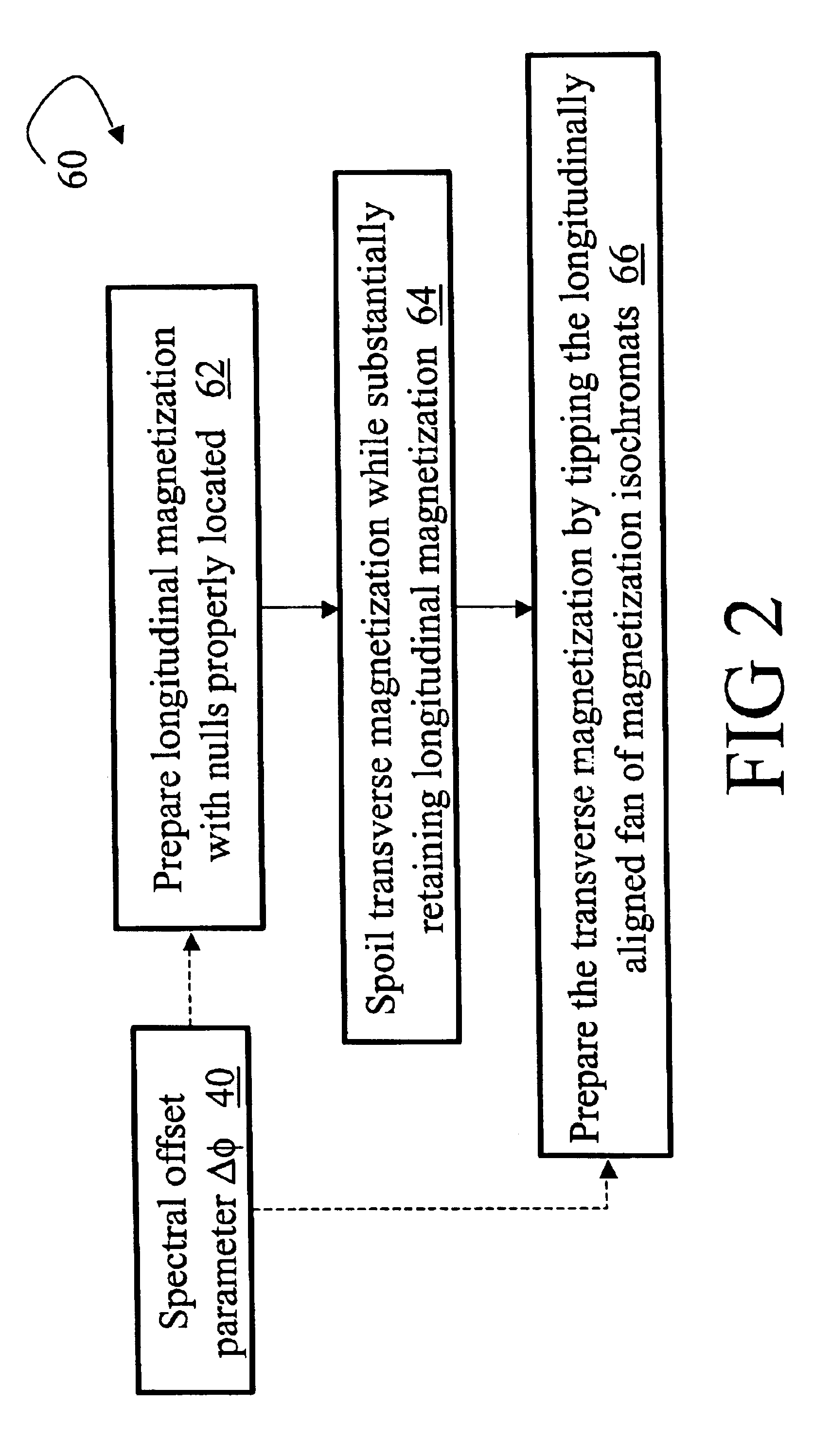Magnetization primer sequence for balanced steady state free precision imaging
a steady-state free, magnetic resonance imaging technology, applied in the field of diagnostic imaging arts, can solve the problems of difficult pulse sequence inserting special sections to perform pre-saturation operations, difficult to continuously pulse the spin system uninterrupted, and significant gradient heating, so as to reduce image scanning times, easy to adapt to different spectral offsets, and reduce image artifacts
- Summary
- Abstract
- Description
- Claims
- Application Information
AI Technical Summary
Benefits of technology
Problems solved by technology
Method used
Image
Examples
Embodiment Construction
[0028]With reference to FIG. 1, a magnetic resonance imaging scanner 10 includes a cylindrical main magnet 12, which is preferably superconducting and cryoshrouded. The main magnet 12 defines a magnet bore 14 inside of which a patient or other imaging subject is placed for imaging. The main magnet 12 produces a spatially and temporally constant and uniform main magnetic field oriented along a longitudinal axis of the bore 14. Instead of a superconducting magnet, a non-superconducting magnet can be used.
[0029]Magnetic field gradient coils 16 produce magnetic field gradients in the bore 14 for spatially encoding magnetic resonance signals, for producing magnetization-spoiling field gradients, or the like. Preferably, the magnetic field gradient coils 16 include coils configured to produce magnetic field gradients in three orthogonal directions including the longitudinal axial direction parallel to the main magnetic field.
[0030]A whole body radio frequency coil assembly 18 generates ra...
PUM
 Login to View More
Login to View More Abstract
Description
Claims
Application Information
 Login to View More
Login to View More - R&D
- Intellectual Property
- Life Sciences
- Materials
- Tech Scout
- Unparalleled Data Quality
- Higher Quality Content
- 60% Fewer Hallucinations
Browse by: Latest US Patents, China's latest patents, Technical Efficacy Thesaurus, Application Domain, Technology Topic, Popular Technical Reports.
© 2025 PatSnap. All rights reserved.Legal|Privacy policy|Modern Slavery Act Transparency Statement|Sitemap|About US| Contact US: help@patsnap.com



